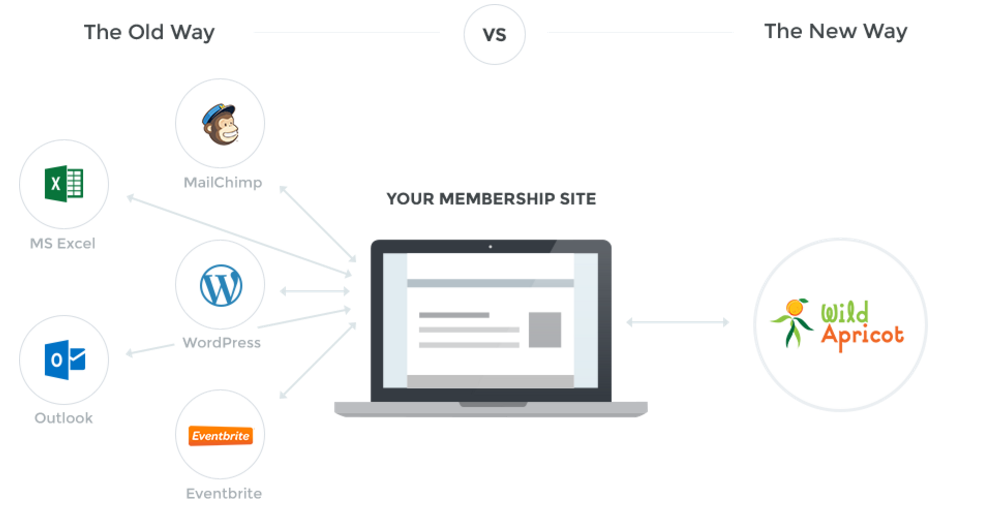Last updated on February 26, 2020
To stay ahead in the ever changing business ecosystem and gain competitive advantage, cloud management services are a must have for organizations. They should incorporate a system which can deliver results right from the word go. Smart organizations are adopting technology partners who have the track record of delivering solid consulting framework, along with designing and migration services, to perfection with the help of application based infrastructure. In today’s business world, cloud domains can be divided into basic two categories, like public and private domains. Based on the criticality of business functions, organizations choose either of the two. Both have its own pros and cons, however, smaller business have an inclination towards shared cloud domains, because they don’t want to spend on IT infrastructure too much. Public domains are managed and run by public servers and network data centers, which are more than enough for smaller organizations.
Arrival of cloud management
Although business houses often are spoiled for choices, when choosing a technology partner, who would prescribe the best cloud management solution for them. An experienced technology partner should conduct a detailed analysis of the IT landscape of the organization and understand its requirements. They would prescribe the best available applications and solutions. Organizations are facing difficulties in modernizing the IT infrastructure, due to increased cost and pace of innovation. This problem is addressed with the help of cloud technology management, which increases agility and establish maximum security, along with cost and compliance management. It is important to identify the right projects and achieve service transformation, leading to increased market penetration.
Let us have look at the 5 main pillars of cloud management solutions
- Agile infrastructure-
With the growing business interest of organizations, it takes detailed planning to create a cloud platform, which can meetthe requirements of both performance and security. The need of the hour is a cloud management services which can deliver virtualized server along with adequate storage and extensive network. These networks should be agile so that performance to control can be assessed easily and large information exchange made possible in heterogeneous network.
Some of its key features are as follows:-
- On demand components which are scalable along with healthy network availability.
- Very easy to change scale of the infrastructure, up, down or scale in/out.
- Gives the power back to the end user for increased service of the system.
- Work environment provisioning, talking of the work loads.
- Entire virtualization of networks and storage along with greater computational power.
- Data migration services
Cloud management services have made it mandatory for organizations, to store their critical data and applications in cloud. This has led to IT cost escalation, which is a major concern for organizations. The trick is to match the incoming data with the proper storage protocol, which is a common problem, faced during data migration. It is important to increase the efficiency of the process, which will make it more agile and cost effective, even after remote office backup. There are some key protocols to be followed:
Data migration planning
- Identification of the owners of the data
- Make a detailed project plan
- Proper tool selection for ETL
- Analysis of hardware stock
- Strategy formation
Migration analysis
- Define the audit criteria
- Gauge the data volume for migration
- Quality assessment of data
- Resource and capacity planning
- Data modeling& analysis
Also Read: Cloud-Native Applications and the 12 Factor Design Methodology
Design
- Preparing migration design
- Make test plans
- Test run source data with model data
Build & Test
- Make ELT conversion
- Audit frequency set ups
- Test each module
- After migration functional test
Migration implementation
- Regular migration drills in live production environment
- Parallel runs
- Defect fixing
- Application Migration
Success of the migration procedure depends on three main points; they are the detailing of the application architecture, the degree of bonding of the architecture and the amount of dry run or drill that is put before the actual migration phase. The best strategy for application migration would include the following,
- Design gates-This includes the industry best practices, roadmap analysis, priority based work, and post migration support.
- Manage- 24×7 platform management along with air tight SLA.
- Infrastructure needs- Tool evaluation and identifying infrastructure needs.
- App profiling-Creating roadmap for applications and impact assessment.
- Build & deploy-Tech design along with its documentation.
- DATA Center consolidation
It is important to standardize and optimize the data centre, which will help in total transformation of internal IT with the business goals. Also, the architecture needs to be studied, based on the existing system for future technology absorption. Data centre consolidation also integrates technologies and IT processes, to turn your business environment into much agile and responsive. This will ensure stability of the IT processes and fine tune the procedure.
- Service delivery platform
In an organization it is often seen that IT department gets engaged in repetitive task, rather concentrating on typical business analyst requirements. This is where IT process automation is required, which eliminates the duplication of processes. Infrastructure transformation as a service platform churns out a much more agile and optimized platform, to attain competitive advantage over others. It integrates tools to bring together various components of the infrastructure like database, networks, servers, voice devices, and middleware to name a few.




